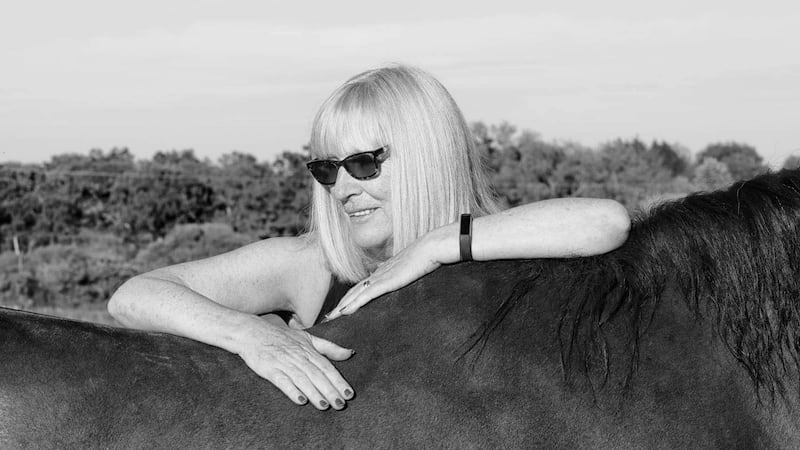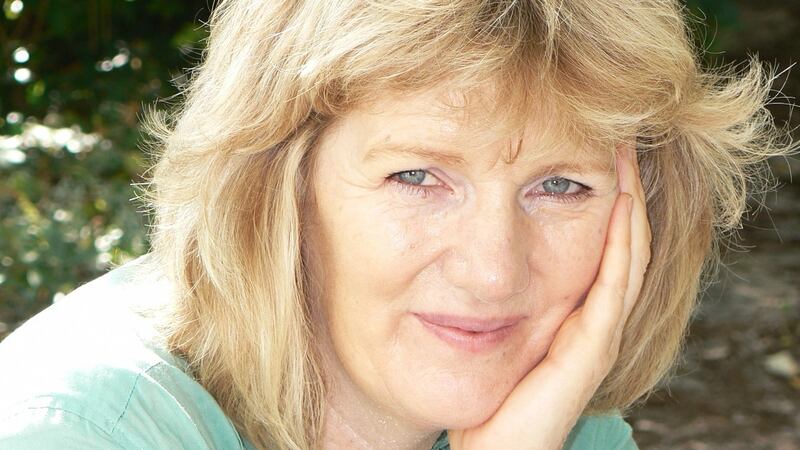The Stone Age (Picador, 80pp, £10.99), Jen Hadfield's third collection, is an astonishing book. Cultivating a tactile, fully-inhabited vision of the Shetland landscape, it confirms Hadfield's place amongst the finest poets writing today. As with Nigh-No-Place (2008) and Byssus (2014), The Stone Age is never squeamish, never rose-tinted, but has a dark, almost Rabelaisian undertow.
There are subtle erotics to Hadfield’s poems here too, a sensory attention that leaps on occasion into exclamation. “Pleasure”, she writes, with a knowing wink, “is a kelp-hung arch, glittered / constantly by the licking of the wave.” These are poems the reader can plunge through. As the stanzas drop down the page, there is a sense of controlled submersion, a journeying through time, through elements, that is rendered with utter skill, by turns bodily, non-human, and disorientating. In Nudibranch, the speaker slips, naked, “into the rockpool’s closet”:
Dropping
to the velveted floor the seizing
onesie of brillo hair, the sweat-sheath
that horripilates with urchinous
buttons – each breaking wave
dousing me of costume,
comfortably
divested of my name.
Throughout the book, there is a joyous play of registers, where the colloquial is interweaved with Shetlandic, and Latinate words are thrown into a dance with a vigorous English. Hadfield is a master of gusto: in these poems, a garden strimmer is a “thrash-metal strap-on”, hares come alive with ideas “like a fright, / silvering your fur!” Combined with the bold typography of the book, which is interspersed with large-print poems that cover the whole page, changing the pace, The Stone Age, for all the inert minerality its title implies, is one of the most vibrantly alive books of poetry readers are likely to come across this year.

Kayo Chingonyi's A Blood Condition (Chatto, 80pp, £10) follows his Dylan Thomas Prize winning 2017 debut Kumukanda. In A Blood Condition, Chingonyi's ambition is bold and mythic. We begin with an invocation of the river god, who "remembers what is forgotten between generations". This astonishing poem, Nyaminyami:… the river god, calls up a litany of colonial desecration, greed and capitalist advancement, the building of a dam unleashing a psychic and ecological scar on a community and their descendents. Next, we turn to a crown of sonnets (a series in which the final line of the preceding sonnet becomes the first line of the next): in its interlinking way, the form allows Chingonyi to follow the history of a family and their inheritance, demonstrating its flow, and an uncanny sense of hauntedness.
Chingonyi paints anxiety and trauma so well you can feel your skin prickle as you read: “Like droplets moistening a windowsill / is how you might, if you were so inclined, / describe nervous energy’s overspill / into panic.” There is a sense, throughout, of the pressure of history existing in the body, this overspill of ghosts, who the speaker “conjures”, sensing “spectres” attending his writing.
As we read on, Chingonyi gambols through forms with the skill of a poet who has an exacting sense of the shape and structure best designed to carry the nuance of his thought. Following the hard-won intelligence of the sonnets, there is a series of shorter poems that have a moving resonance which seems to echo across the expanse of the blank page below, as in ‘[Family Portrait]’:
And if every image is
a self-portrait of the photographer
I praise what stirred in whoever is behind the camera
to take this picture of my mother and me at my father's grave.
Chingonyi shows himself to be a skilled poet of the mythopoeic, an instinctive formalist, and a nuanced and attentive lyricist. His poems advocate a clarity complicated by structure and design, as in The last night of my 20s, dedicated to the late Roddy Lumsden:
Maybe it is better some things
retain their mist
that all of us might carry a well of myth
in the pit of our pith,
maybe it is by such melodies we exist.
Another musical and mythic poet who is being brought to new readers recently is Charlotte Mew (1869-1928), perhaps the finest woman poet of her era, whose work has been unjustly under-sung. Julia Copus's supreme biography, This Rare Spirit: A Life of Charlotte Mew (Faber, 480pp, £25) follows Faber's 2019 edition of Mew's Selected Poetry and Prose, also edited by Copus. It is hard to do justice to the breadth of research Copus has done here, or the compassionate, detailed conjuring of Mew and her milleu. A deeply private poet, Mew is nevertheless exquisitely rendered here, and her imagination is engaged with on such intimate terms that This Rare Spirit draws readers into a sort of communion. Taking unseen archival materials, and a meticulous, wide-ranging attention to historical and literary sources, Copus's biography of Mew is an essential book, a classic work of literary biography.

In her introduction to Moyra Donaldson's latest collection, Bone House (Doire Press, 72pp, €12), Paula Meehan calls up a similar imperative of scope crystallised into a single life, centering the importance of the lyric: "The exploration and interrogation of private memory", she writes, "especially through the mitochondria of the matrilinear legacy is so precise and exact that the poet's life… becomes mirror to a whole culture of religious and social woundedness." Following her 2019 collection Carnivorous (Doire Press), Donaldson continues her exploration of spectrality, the looping of memory and the present moment, attending to the festivals of Beltane and Samhain, so that often these poems confound time and feel poised between worlds, knitting all the tenses of experience into the lyric "now".
There are weaker poems here, where the thought feels slightly unfinished (as in Daughters Who Dance With Death and Prayer to Black) and, unusually, the collection finds its strength in the middle section, shirking the usual editorial wisdom of bookending works with the strongest poems. That said, when Donaldson is at her best, she is startling and unsettling. In an ekphrastic poem after Rembrandt, her eye for image and inference condenses into a sense of inevitable tragedy focused through the figure of the mother:
Mary's face is an exhausted moon,
shadows under her dark eyes
and it is with reluctance
that she parts her cloak
to reveal the infant
sleeping, oblivious in her lap.
In Amsterdam, the artist
inks a new plate -
The Descent From the Cross,
the dark night over Golgotha.
This attraction to violence, and to what another moving lyric calls A Sudden Shaft of Light, where a “demented mother” suddenly and briefly recognises the speaker, has a surreality too. Visions pull together various impossibilities which seem to cluster a traumatic history into Donaldson’s own experience of loss:
News has come through –
in the morning my father is to hang
my mother draws the curtains
for we have been disgraced –
my father, dead thirty-eight years,
is to hang in the morning.
For all the book’s darkness, however, there are moments of comedy and tenderness stitched through the collection. There is an attention to a sort of mysticism or religiosity, of passage between the dead and the living, the present and the lost, which can by turns channel tortuous images and bright ones, as in the collection’s final poem. Hearing, in which a singing bowl is struck in front of a listening baby, draws out a smile, and seems an image of the mind cleared of its otherwise brooding receptivity to spirits “as concentric rings / of pure sound fill the ordinary day / with what could be prayer”.
Moya Cannon's Collected Poems (Carcanet, 344pp, £16.99) brings together six collections with a new introduction by the poet. Across three decades of work, these poems demonstrate the marked consistency of a poet whose early collections are accomplished and assured, and who knows how to take her time, and how best to use it. There is an admirable self-awareness in Cannon's work, a confidence in the power and resilience of quiet work:
There are small unassailable words
that diminish Caesars;
territories of the voice
that intimate across death and generation

Always musical, holding to the truth of a poetry embedded in, and in some ways sung out of, the landscape, Cannon has the skill to balance ideas that might appear lofty and untethered in lesser hands. Evolution, anthropology, carvings on cave walls and the testimony of manuscripts call on “the power / of an inked feather, / of the quartz seam / ticking under the heather” to sing across and make sense of deep time and wide geographies. This is an essential book for anyone interested in contemporary Irish poetry. If, for Emily Dickinson, a good poem should make one feel as though the top of one’s head were taken off, Moya Cannon’s have the effect of blowing an ember, of kindling a light, revealing the strange images passed down to us:
Did you know, you make my head flame.
Blue flames and purple flames leap about my head.
I had once a thousand tongues
but tonight
my head is crashing through the sky,
my head is flaming on a dish.
My love,
carry it in carefully,
my love,
carry it in with trumpets.










